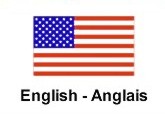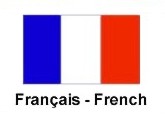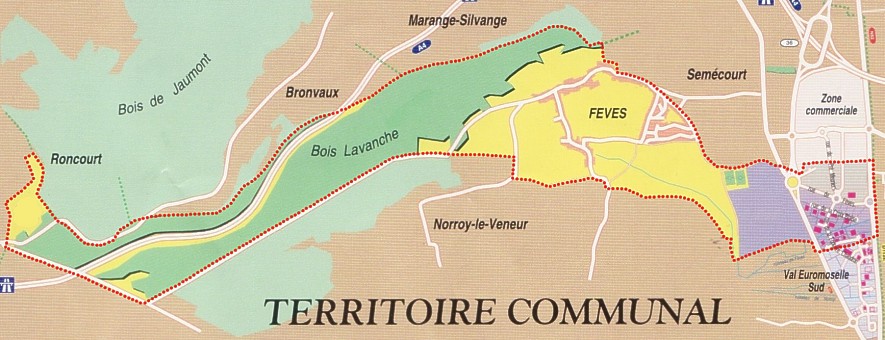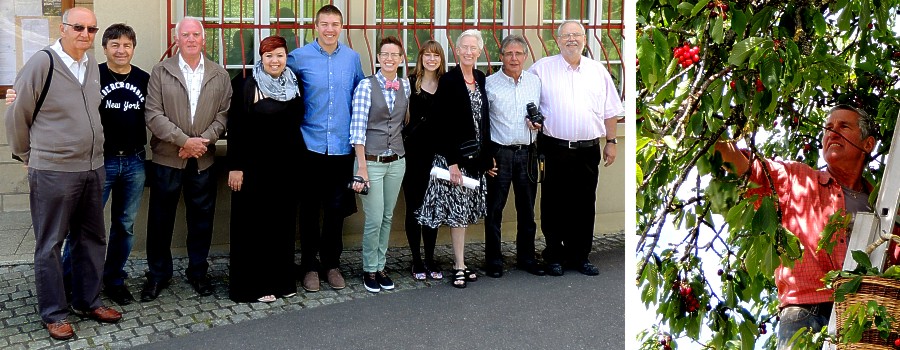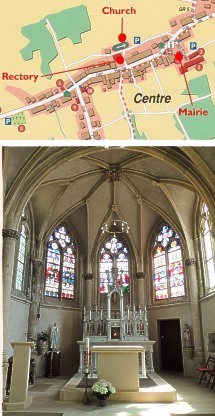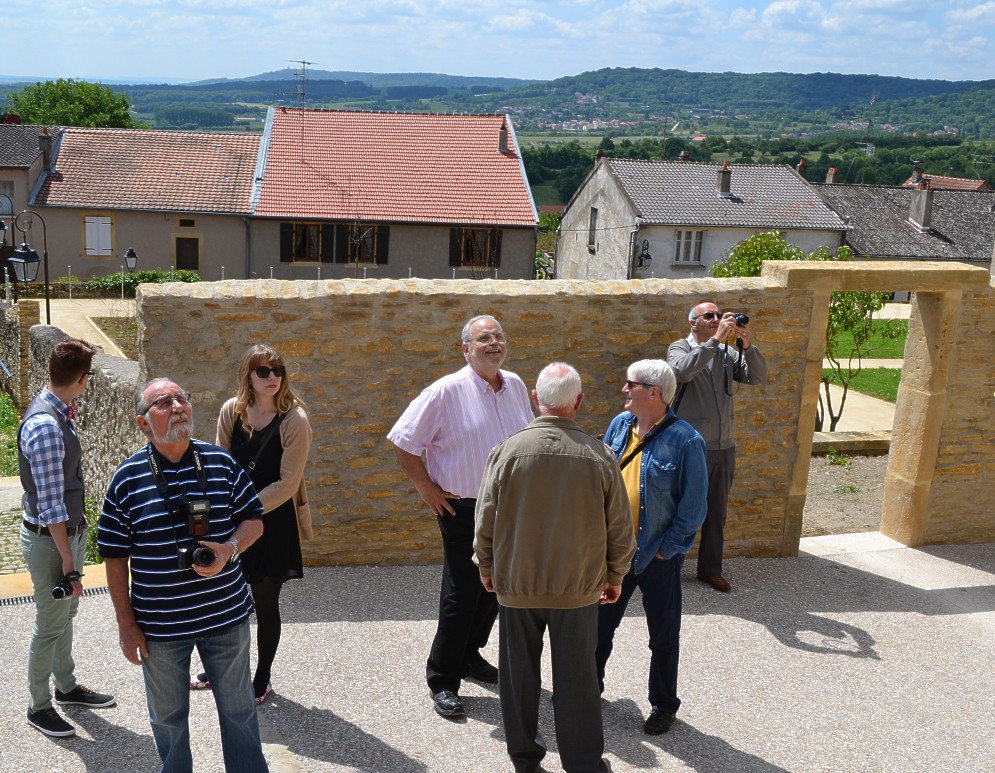The region designated as Fèves is within the dotted-red border. The area in green encompasses the high ridge containing the Canrobert Forts and Fort de Fèves. The lavender-colored region is a commercial and industrial zone that provides a good tax base for the village. The yellow area is the residential portion, including the church, school and village hall. Buildings are represented by the pink-shaded zones near the streets.
The visitors met Mayor René Girard at the Mairie - the village hall - for a photo. With Pracht again serving as interpreter, the next order of business was a short tour of the village.
Left: Photo in front of Mairie. Marc Davoli, grandson of 1948 Mayor Auguste Berne, is at the far left. The 2nd Assistant to the mayor Cyrille Crast is between Davoli and Mayor René Girard. Hannah and Ryan Serwe, Mariya and Katherine Vaughan, Gloria Freeland, Gérard Torlotting, and Art Vaughan complete the group. Right: 3rd Assistant to the mayor Jean-Marie Watiez picking cherries at his home east of the Mairie.
From the Mairie, the group walked to the east a short distance to see the home where Henri and Mathilde Torlotting lived later in life. They surprised Jean-Marie Watiez, one of Mayor Girard's assistants. He was on a ladder picking ripening cherries. He threw the youngsters a bunch.
The group then crossed Rue Haute and walked in first a northwesterly and then westerly direction along Rue Somgue
until they reached the old Catholic church.
The entrance to the stone church was on the west side. Being the highest point in the village, the group could look
southward over the rooftops of the homes to the plain stretching to the Moselle River. In the distance, Metz'
St.
Etienne Cathedral could be clearly seen.
The inside of the church had been beautifully restored. Several people climbed the steps to the steeple clock.
Left: the village church is the highest point in the village. Right-top: map showing the Mairie, church and rectory. Right-bottom: main floor of the church viewed from the entryway
Unlike in 1948 when Father Holveck served the village, in 2014 there was no resident clergyman. A priest was shared
with nearby villages. It was decided to renovate the empty rectory to serve as the new Mairie.
After inspecting the progress of the work, the group moved to the garden area between the rectory/presbytery and Rue Haute
to the south.
Looking north from the adjacent garden, the rectory is at the left and the church is at the right. The photo reveals the steepness of the area. Both Girard and Torlotting are pointing at the building to the south that had served as the Mairie in 1948. At the far right in the blue-striped shirt is Jacques Ferry, a photographer for the area newspaper Le Républicain Lorrain.
This photo, taken at the same location as the one above, is of the view to the south. Ferry, Katherine Vaughan and Art Vaughan look toward the renovated rectory, while Davoli takes a picture of it. Mayor Girard and Pracht are talking to Art Vaughan, while Mariya Vaughan looks at the building with the red-tile roof located at 32 Rue Haute. In 1948, that building housed the village hall, school and was schoolmaster Torlotting's and his wife's home.
